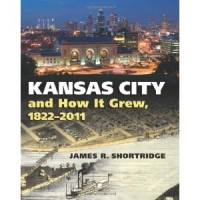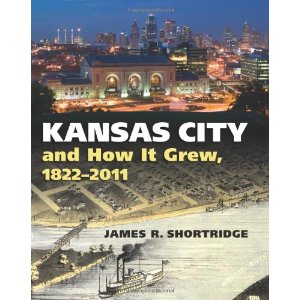 Author: James R. Shortridge
Author: James R. Shortridge
Publisher: University Press of Kansas
Book Review by: Sonu Chandiram
Kansas City, founded in 1838, has an area of 319 square miles (including water) with about 463,000 people (2011 U.S. Census Bureau estimate), the 37th most populous city in the United States.
Located at the confluence of the Kansas and Missouri rivers, it is the largest city in the state of Missouri, and 23rd largest in land area among U.S. cities.
The city is well known for its music styles of jazz and blues, as well as its tasty barbecues. It is noteworthy to know that downtown Kansas was selected by the well-known magazine Forbes in March 2012 as one of the best downtowns in the United States, for its rich culture in the arts, its cuisine (particularly its barbecue) its numerous fountains (over 200 of them) and its upscale shopping.
Kansas City has been often referred to as the ‘Heart of America’ because it is located at the geographic center of 48 contiguous states in the country. This heartland city is home to the well-known football team – Kansas City Chiefs.
This large book, packed with numerous maps and dozens of black-and-white and full-color photos by prize-winning geographer James Shortridge is a sort of historical geography spanning nearly 200 years of growth. See in it how Kansas City, dubbed a ‘cow town’ in its early years, has developed into a large, modern, metropolitan area.
Shortridge traces for you and shows you how different modes of transportation affected the process of change in Kansas from a rural area to a town, to a large urban center, and later, how suburbanization, further developed it into a more desirable place to work and live in, than in its past.
Transportation shifts from rivers to railroads, then to highways and superhighways and the addition and expansion of airports were important factors in the development of Kansas into a modern metropolis. Upscale residential expansion (e.g. Mission Hills) has in recent years attracted large numbers of affluent people from other parts of the state of Kansas and other states of the country as well.
The author has created a work that is different from others that are either picture books (found typically on coffee tables) with very little history behind them; or local history books with pictures but no attempt to provide understanding of the relationship between the history and the pictures.
The author has lived in the Kansas City area for a number of years, as have a lot of his ancestors and as do many of his relatives. He notes that his paternal ancestor Samuel Shortridge migrated about 175 years ago from Kentucky to Independence, Kansas in 1839. Living in the area and having relatives there are certainly a plus when someone is writing about and presenting views of it, as the author has capably done.
Different sections of Kansas City developed in different ways. Shortridge points out to three locations that were the “economic core for the entire Metropolitan region”:
- The West Bottoms that straddles the state line near the mouth of the Kansas River
- The city market are squeezed between Interstate 70 and the Missouri River
- Minnesota Avenue in downtown Kansas City.
So how did each of these areas develop? No one could have predicted what would happen and how differently each would develop compared to the other two.
He points out the outcome: “the West Bottoms housed Kansas City’s signature meatpacking industry and the union railroad depot; the market area featured an elaborate city hall; and Minnesota Avenue a series of busy department stores
Then Shortridge ask the question: “what caused some urban districts to sprout mansions and others slums? Why has almost no part of the city maintained a single role for all or even most of its urban existence? These are basic questions I want to address. They are part of a larger quest….”
Read below, how the way different parts of Kansas City developed that way they did, ties in well with the author’s larger purpose in helping readers understand Kansas City better.
From reading the Introduction, we gather that the author’s main reason in working on this project was “part of a larger quest to explain how Kansas City came to look and function the way it does and to be perceived the way it is.”
This is not only a very informative and insightful book on Kansas City, but an excellent example of how a history of a geographic area should be written!







